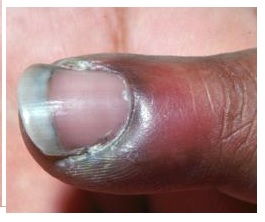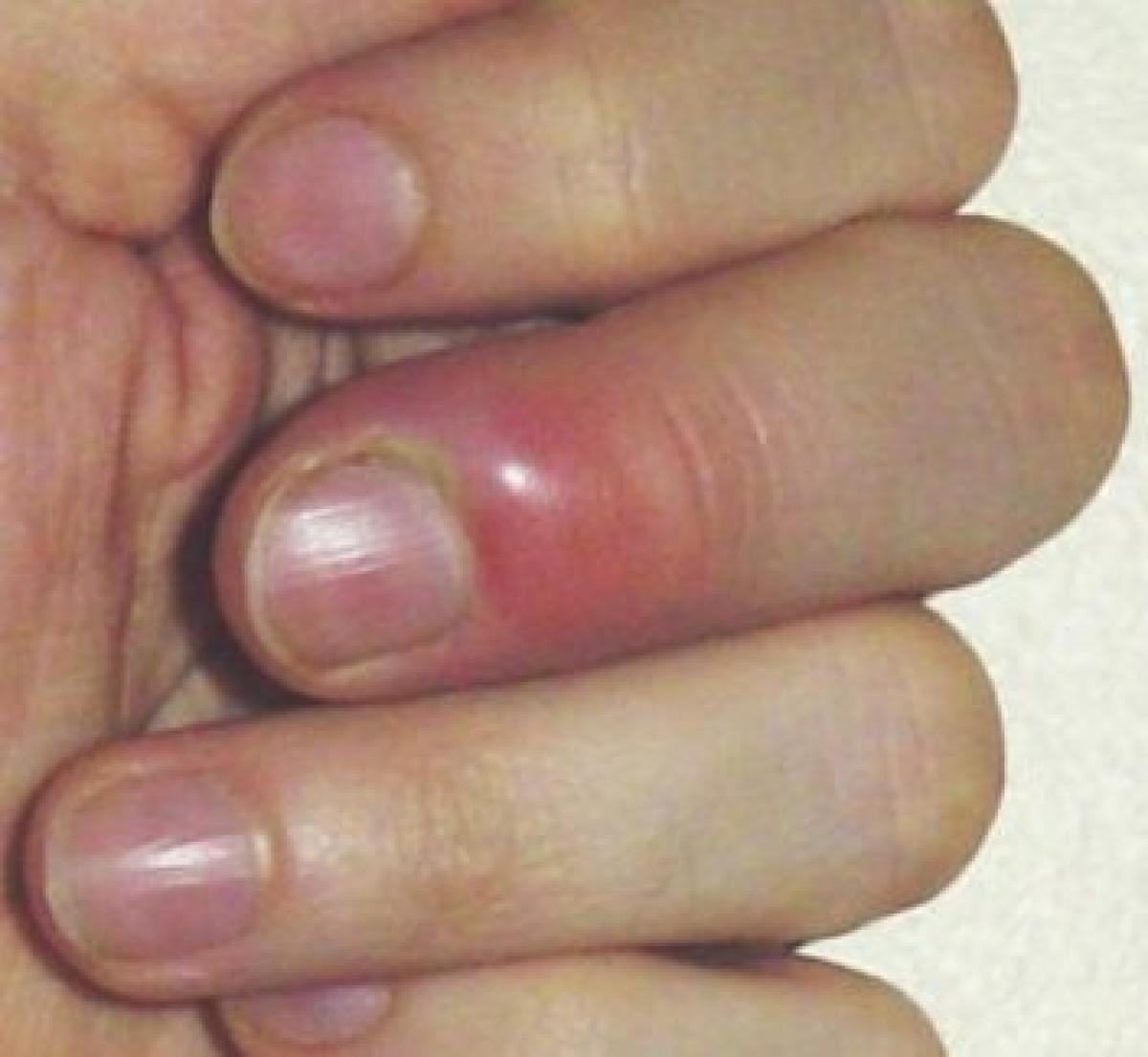PARONYCHIA - SWELLING AROUND THE NAIL FOLD
- font size decrease font size increase font size
 Paronychia is a common hand infection around a fingernail that begins as cellulitis but may progress to a definite abscess. The infection is more common in women than in men, with a female-to-male ratio of 3:1.The infection can result from seemingly innocuous conditions, such as
Paronychia is a common hand infection around a fingernail that begins as cellulitis but may progress to a definite abscess. The infection is more common in women than in men, with a female-to-male ratio of 3:1.The infection can result from seemingly innocuous conditions, such as
hangnails, or from traumatic events, however minor, such as nail biting, finger sucking, manicuring, or artificial nail placement. The break down of the physical barrier between the nail bed and the nail allows the infiltration of infectious organisms such as bacterie and fungus/yeast infections.
Fungal paronychia most often occurs in persons whose hands are repeatedly exposed to moist environments or in those who have prolonged and repeated contact with irritants such as mild acids, mild alkalis, or other chemicals. People who are most susceptible include housekeepers, dishwashers, bartenders, florists, bakers, and swimmers. In addition, individuals who are immunocompromised i.e (HIV) infection or those undergoing steroid therapy, are predisposed to paronychia.
Signs and symptoms
-
The affected area often appears erythematous and swollen
-
In more advanced cases, pus may collect under the skin of the lateral fold
-
If untreated, the infection can extend into the eponychium, in which case it is called eponychia
-
Eventually, the nail plates become thickened and discolored, with pronounced transverse ridges
-

-
The cuticles and nail folds may separate from the nail plate, forming a space for the invasion of various microorganisms
Preventive Management
Strategies for paronychia include the following:
- individuals to avoid any trauma to the fingernails and to avoid nail biting and finger sucking.
- treatment is unlikely to be successful if exposure to a moist or wet environment is not changed.
- immunocompromised must remain vigilant against any minor trauma to the fingertips and nails.
Treatment
Depending on the intensity of infection
- If soft tissue swelling is present without fluctuance, the infection may resolve with warm soaks 3-4 times daily
-
Patients with extensive surrounding cellulitis, a history of diabetes, peripheral vascular disease, or an immunocompromised state may benefit from a short course of antibiotics
-
If an abscess has developed, incision and drainage must be performed

